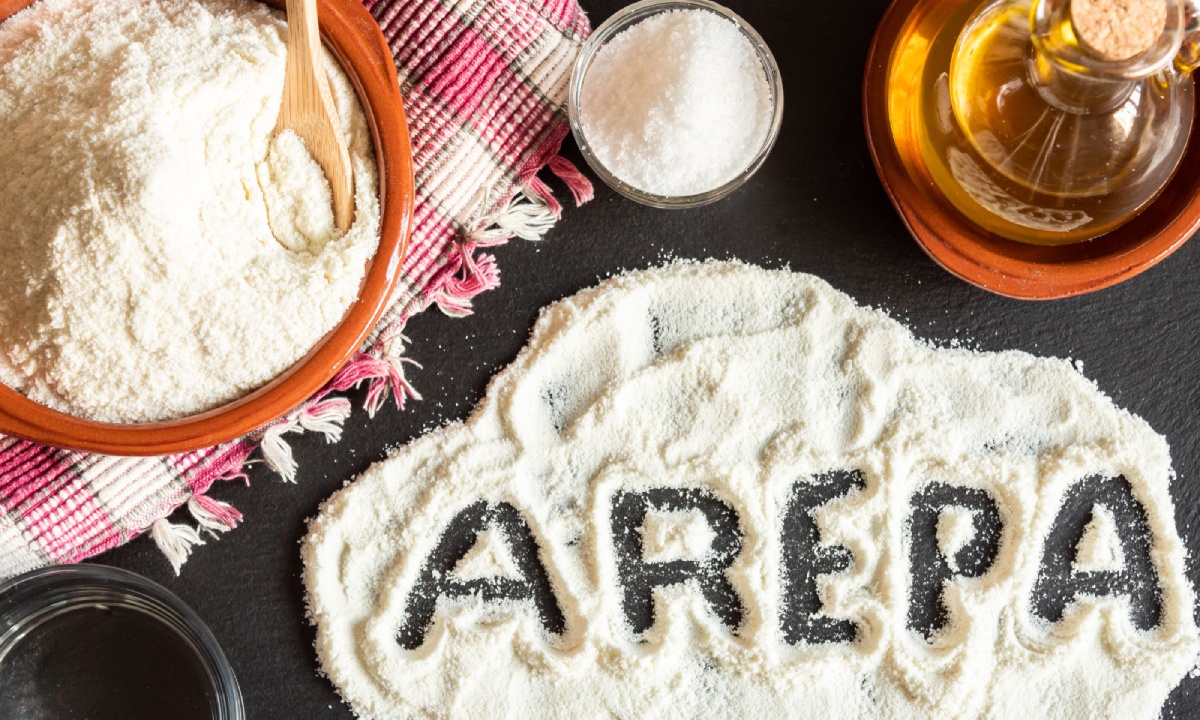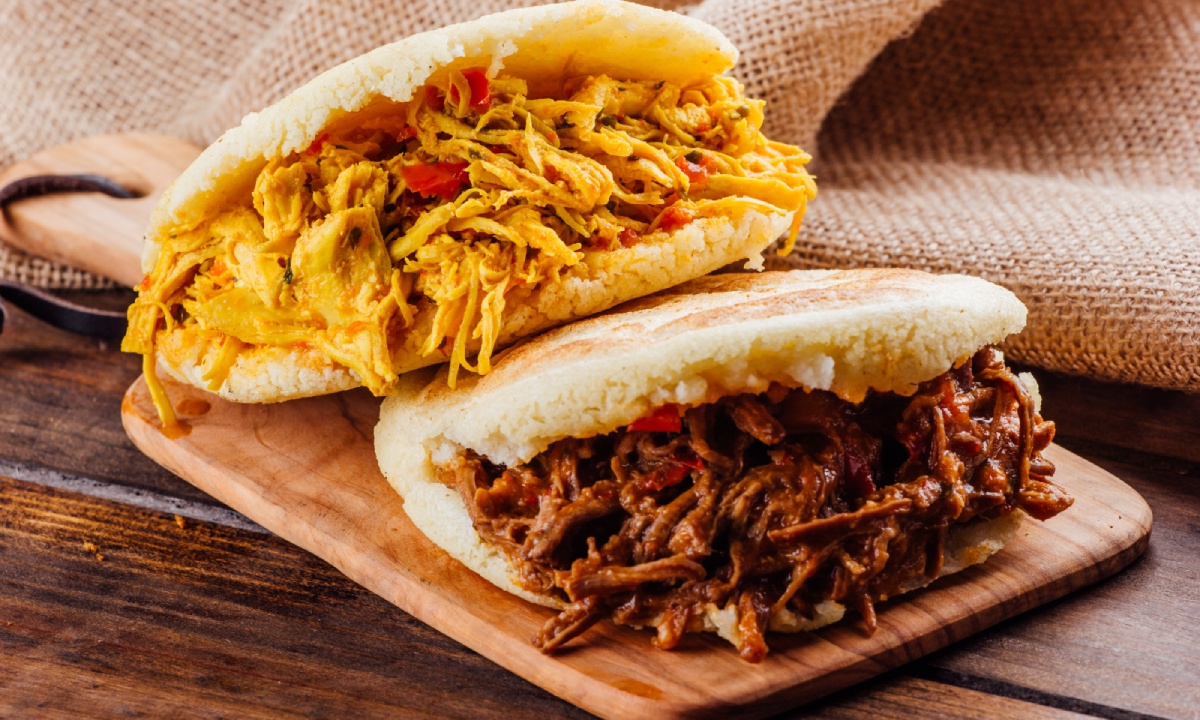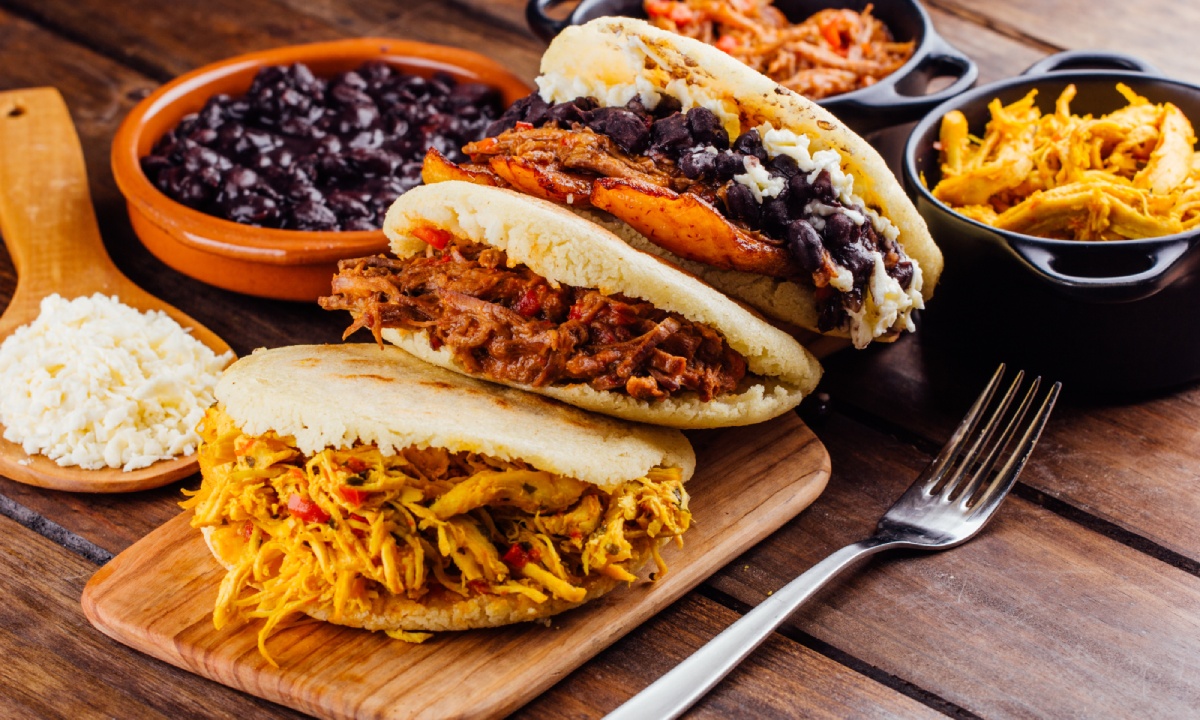A taste of two worlds: The Arepas of the Canary Islands
Did you think arepas were typical of Latin America only? Nope! They’re a Canary Island tradition too! It’s a common recipe on the islands, above all in Tenerife, La Palma, La Gomera and El Hierro. Today we’re introducing you to something few tourists would link with Canarian cuisine: arepas. Read on and find out what they are and how they landed on the Canary Islands. We’ll even share our favourite recipes…
What is an arepa?
Arepas are an easy-to-make kind of round flat bread that you can grill or fry. Once you’ve cooked them, you cut them in half and stuff with your choice of ingredients; think chicken, cheese or beans.
The origin of arepas
Arepas date back to pre-Columbian times; there are even historical documents showing arepas existed even before Christopher Columbus arrived in the Americas. And let’s remember, back then, there was no border between what we know today as Colombia and Venezuela.
According to these historical records, the indigenous people who lived in what is now known as the state of Sucre in Venezuela called their round maize food an ‘erapa‘. And over time, they have become known in many countries as ‘arepas’.
In the past, to prepare the dough, they would have to soak and grind the maize, but with the advent of precooked maize flour in the 1960s this all changed, and they became a lot easier and simpler to prepare.
Arepas land in the Canary Islands
The arepa recipe has been officially adopted by the Canary Islands, and the best recipes have well and truly won a place in the hearts of all the local islanders. If you’re travelling to the islands of Tenerife, La Gomera, La Palma or El Hierro, you’ll see endless ‘areperas’ (cafes serving arepas) where you can savour this culinary gem. It might be simple to prepare, but the flavours are utterly unique.
Some arepa recipes call for local ingredients such as soft cheese, Canarian banana, ‘mojo’ sauce or sweet guava paste.
Craving an authentic arepa experience on your Canary Island adventure? Be sure to try the “reina pepiada”, filled with a creamy salad of shredded chicken, mayonnaise, and avocado, or the “carne mechada”, featuring tender pulled beef marinated in onions and peppers. Prepare to be tantalized!
Stay tuned, as we’ll soon share one of the recipes that’s the perfect blend of Canarian-Latin American culture.
A voyage to Venezuela
Venezuela was the main Latin American destination for immigrants, because at the time, the country offered great economic opportunities thanks to the oil industry, making it the destination of choice for those leaving the Canary Islands.
In fact, in the Canary Islands, Venezuela is almost considered another island in the archipelago, and is often referred to as the ‘ninth island’. Why? Because of the high levels of immigration/emigration between the Canary Islands and Venezuela, often seen as a return trip.
Similarly to the process of the conquest and colonisation of the archipelago, immigration from the Canary Islands to Venezuelan lands took place between 1948 and 1950. Back then, life in the Canary Islands wasn’t easy: economic conditions were very poor, poverty was hitting the island hard, and there weren’t even any schools or electricity on the island of El Hierro, which is why many people made the decision to emigrate. What’s more, back in 1948 Venezuela had a democratic government headed by Romulo Gallegos, with no diplomatic ties with Spain under the Franco regime. Under the Venezuelan leader’s command, Spanish immigrants were welcomed. They were considered anti-fascists, and their suffering at the hands of the dictatorship and poverty that ensued following the Civil War were well known.
When the Canary Islanders – above all those in the western islands – were looking for opportunities in the ‘New World’, they would make the move with their families, or even as a whole neighbourhood or local area.
The first wave of emigration took pace in the seventeenth and eighteenth centuries, when numerous Canary Island families (especially from Tenerife) decided to migrate to Venezuela to reap the rewards of New World trade, in agriculture in particular.
In fact, it’s said that at the time, whole villages such as Buenavista and El Sauzal were left as ghost towns as a result of this mass migration, something that would also happen in El Hierro and La Palma.
There was another large wave of migration in the 19th century, when the Canary Island people settled as ‘free men’ in numerous parts of Venezuela, taking advantage of the opportunities agriculture brought.
By the 20th century, between 1948 and 1950 some 65 ships from the Canary Islands went to Latin America, representing, according to estimates, more than 12,000 canaries without official papers. Back then, when they arrived they would be sent to a sort of island jail, where they would stay for some forty days before being used for mainly agricultural work.
The return trip
The crisis in the Canary Islands, along with the golden era of oil, led many immigrants to settle there for good. But from the 90s, as the Venezuelan economy began to decline, Spain underwent a democratic transition and tourism developed, several generations returned to the islands.
The cultural consequences of this historical phenomenon have a continued presence in the Canary Islands, spanning everything from culinary traditions to culture, music and even family ties. In fact, according to the latest official statistics published in 2023, more than 5% of the population of Tenerife is Venezuelan.
In short, the Canary Island migration to Venezuela represents an extraordinary chapter of the people who dedicated themselves above all to the Latin American country’s agricultural sector. Surprising as it may seem, the islanders living in Venezuela became the producers of maize seeds, a staple of the Bolivarian country. Of the country’s major seed producers in the 19th century, more than 90% were of Canary Island origin, with many islanders standing out in the field of seed production, setting up companies like Elio Pérez Ortega (Semillas Aragua), Alquimiro Marante (Flor de Aragua), Haroldo Pino (Prosevenca) and Agroisleña, who set up Semillas Híbridas in Venezuela (Sehiveca).
This to-and-fro trip made by so many Canary Islanders led to the import of – among other things – the delicious recipe for arepas, which has become one more shining star of Canary Island cuisine
Canarian-style arepas recipes
Let’s start with our simple method for preparing the dough for your arepas.
Ingredients:
- 2 cups of pre-cooked, white maize flour
- 2 1⁄2 cups of warm water
- 1 teaspoon salt
Method:
- Add the maize flour and salt to a bowl and mix. Add the warm water, a little at a time, and mix into the flour using your hands until you form a soft and uniform dough.
- Divide the dough into portions and shape into balls.
- Flatten each ball with your hands to make small, not too thick discs.
- Heat a frying pan or non-stick griddle over medium-high heat. Cook the arepas for about 5 minutes on each side.
- Finally, cut in half and stuff them with your choice of filling.
If you don’t know what ingredients to use for your arepa filling, here are some of the top choices in the Canary Islands:
- Arepa with shredded beef and mojo sauce:
This delicious recipe is very simple: you’ll need around 0.5 kg of brisket, 1 onion, 1 red pepper, 2 garlic cloves, 3 tablespoons of tomato purée, bay leaf, rosemary and oregano.
Start by cooking the meat. First, smother it in oil and season with salt and pepper. Next, add the vegetables (chopped however you like) and tomato purée, along with the herbs. And don’t forget a traditional ‘mojo’ sauce to finish off the recipe.
If you want to try different combinations, don’t worry, we’ve got the ideal recipe for you.
- ‘Reina pepiada’ arepa
This traditional ‘reina pepiada‘ arepa is filled with chicken, avocado and mayonnaise.
Add some chicken breast to a pan and cover with water until they’re completely immersed. Add a little salt, cover and cook over a high heat until boiling point, then turn the heat down.
Once cooked, leave the chicken to cool, and then shred.
In the meantime, mash a ripe avocado, add the juice of half a lemon, and mix it with a little olive oil and minced garlic. Next, pour this mixture over the cooled and shredded chicken and mix until all the ingredients are combined. Finally, add the mayonnaise and mix it all up again. And it’s ready!
With these recipes, you can bring a bit of Canarian flair into your kitchen. Until your next island adventure, have fun cooking them!
Categories: Be inspired, La Palma, Tenerife






Leave a Comment